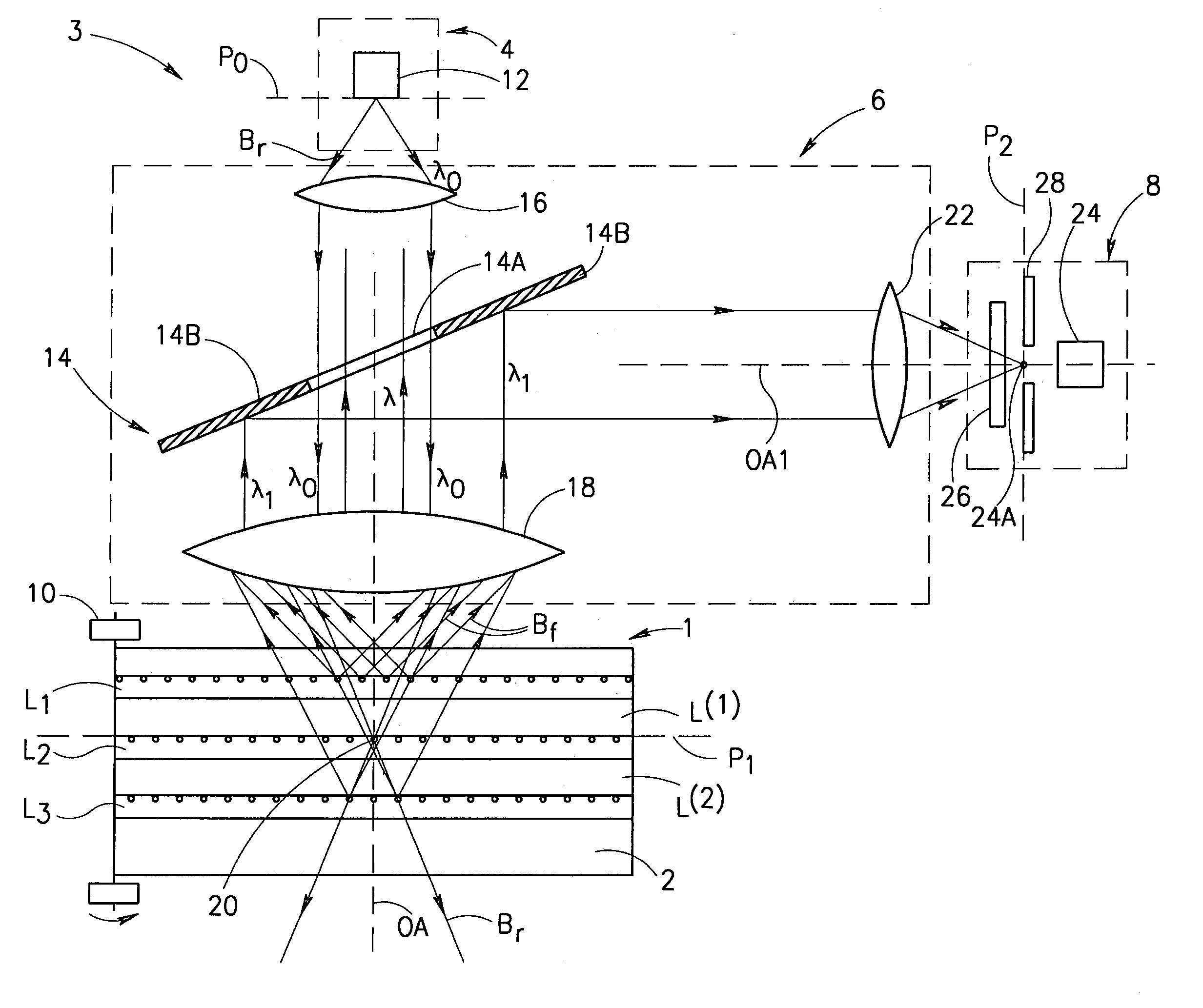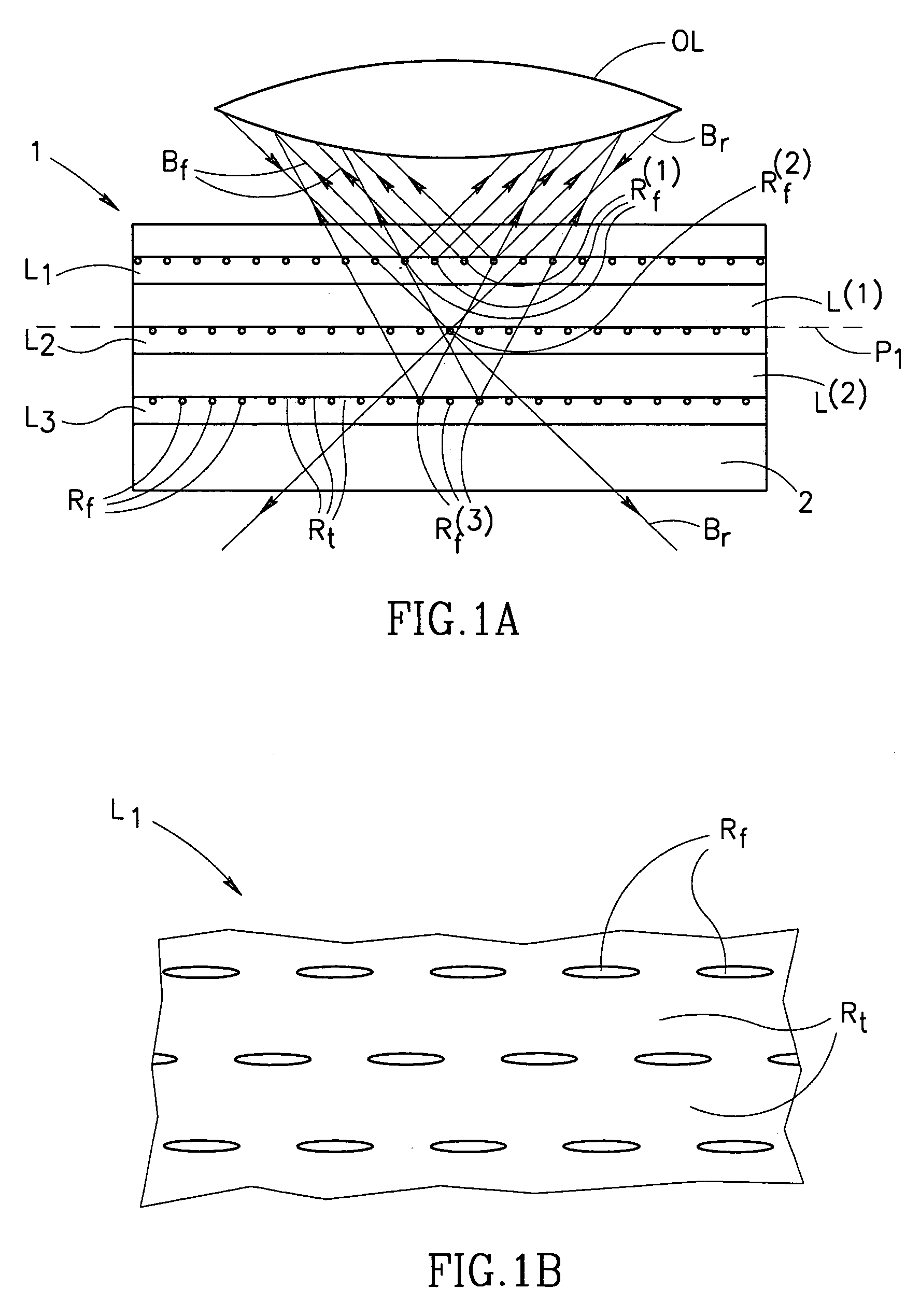Reading method and apparatus for a three-dimensional information carrier
a three-dimensional information carrier and data reading technology, applied in the field of scanning techniques, can solve the problems of crosstalk affecting the signal-to-noise ratio, the information capacity of a stacked information carrier is limited in practice to 10sup>10, and the cost effectiveness of cost reduction, so as to achieve significant increase in the number of information layers and reduce the crosstalk between the addressed information layer and all other information layers.
- Summary
- Abstract
- Description
- Claims
- Application Information
AI Technical Summary
Benefits of technology
Problems solved by technology
Method used
Image
Examples
Embodiment Construction
[0053]In order to more clearly illustrate the unique feature of the present invention, it would be reasonable to consider a three-dimensional optical memory device that utilizes fluorescent data regions, i.e. regions excitable in response to predetermined incident radiation. FIG. 1a schematically illustrates a three-dimensional optical disk, generally designated 1, that comprises several information layers, for example, three layers L1, L2 and L3, formed on a substrate 2. Thickness d of each information layer is approximately 0.3–20 μm. The adjacent information layers are spaced by intermediate layers L(1) and L(2), respectively, made of substantially optically transparent material. Thickness L of each intermediate layer is approximately 5–500 μm.
[0054]As better shown in FIG. 1b, information stored in the information layer, for example layer L1, is in the form of a pattern having a plurality of spaced-apart data regions, generally at Rf, containing fluorescent material, which are sp...
PUM
 Login to View More
Login to View More Abstract
Description
Claims
Application Information
 Login to View More
Login to View More - R&D
- Intellectual Property
- Life Sciences
- Materials
- Tech Scout
- Unparalleled Data Quality
- Higher Quality Content
- 60% Fewer Hallucinations
Browse by: Latest US Patents, China's latest patents, Technical Efficacy Thesaurus, Application Domain, Technology Topic, Popular Technical Reports.
© 2025 PatSnap. All rights reserved.Legal|Privacy policy|Modern Slavery Act Transparency Statement|Sitemap|About US| Contact US: help@patsnap.com



